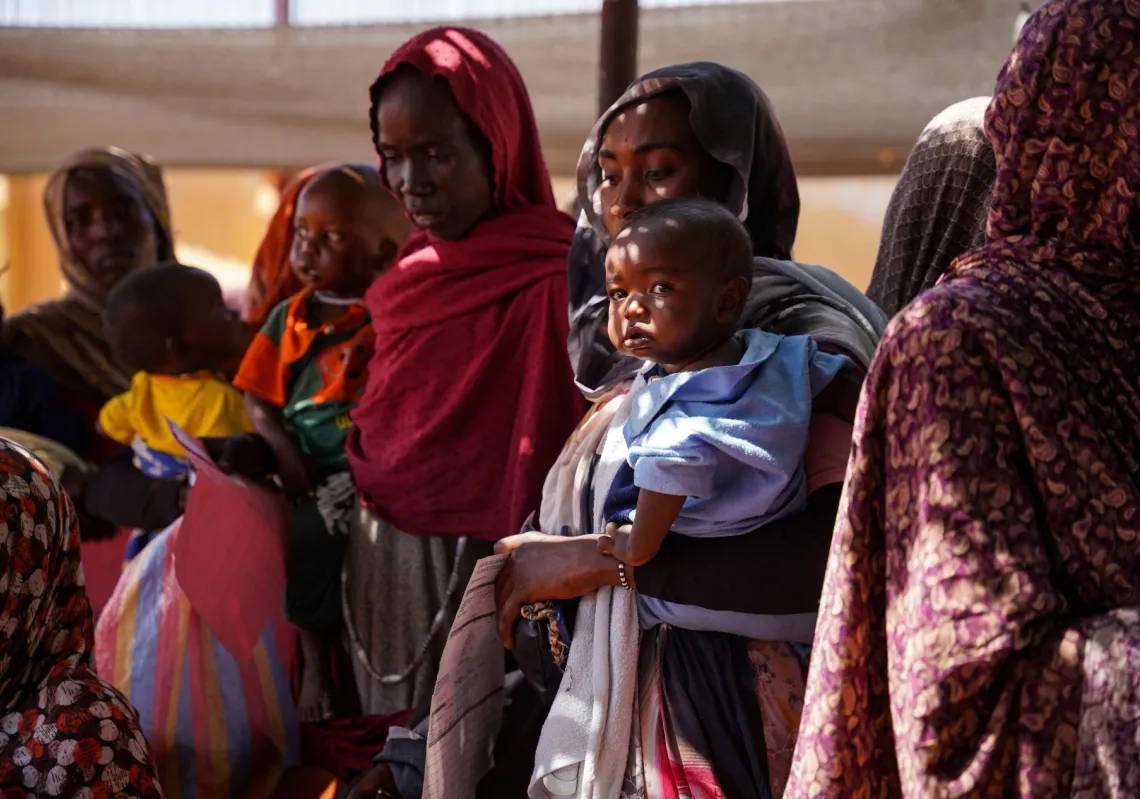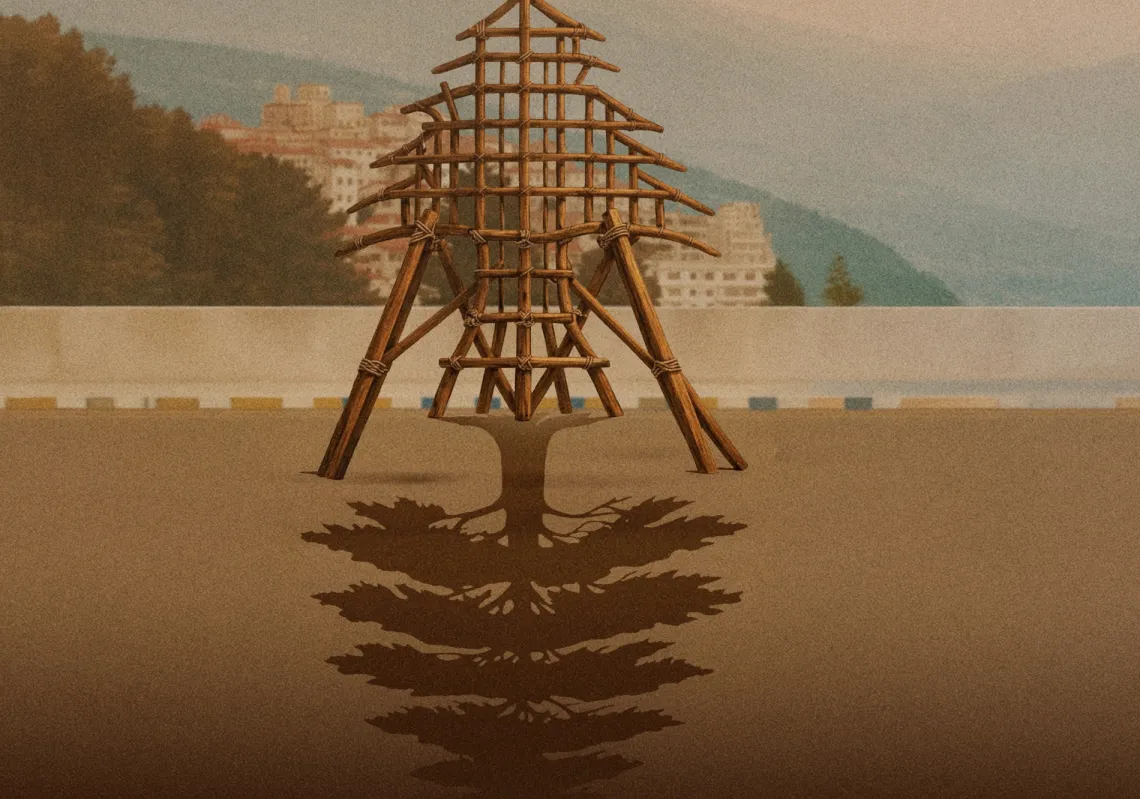Amid all the drama between the Israeli bombing of the Iranian consulate in Damascus two weeks ago to Iran's launching a retaliatory attack on Israel on Saturday night, it has been business as usual for Syrian President Bashar Al-Assad, who is part of the so-called “Axis of resistance” led by Iran.
Al-Assad has been photographed on state and social media moving freely within Damascus, while members of the Iranian Revolutionary Guard Corps are holed up in undisclosed locations within Damascus, fearing further Israeli assassinations.
Damascus has been advised by Arab nations not to get involved in the turmoil that spilt into the region since 7 October when Hamas attacked Israel. It has not directly participated in any strikes against Israel and has remained detached from the escalation in the Occupied Golan Heights.
Read more: Why is Syria staying quiet on Gaza?
Notably, al-Assad has boosted communication with Arab officials while simultaneously decreasing communication with Iranian officials. This was especially noted during Ramadan and the Eid al-Fitr celebrations.
Al-Assad also conspicuously refrained from condemning the Israeli attack on the Iranian consulate on its own territory in Damascus.
Here Al Majalla offers a comprehensive timeline of how events unfolded since 1 April, when the Iranian consulate was attacked by Israel.
On 2 April, a day after the attack, al-Assad called Iranian President Ebrahim Raisi and offered his condolences in the wake of the attack that killed a number of Iranian military advisors.
He expressed “deep sympathy and condolences to the families of the martyrs and the dear Iranian people" and left it at that, without mentioning any intention of retaliation.
Five days later, on 7 April, the official X account of the Syrian presidency posted that al-Assad and his wife Asma participated in a collective Iftar banquet in the old city of Tartous hosted by civil society associations and community members.
Syrian President Bashar al-Assad visited the coastal city of Tartus , where he shared iftar with citizens of his country. pic.twitter.com/IHTCJljhjn
— S p r i n t e r F a c t o r y (@Sprinterfactory) April 8, 2024
Photos and videos were shared, depicting their presence among the participants at a venue situated near the site where an Israeli air strike had targeted an Iranian official.
On 8 April, Iranian Foreign Minister Hossein Amir Abdollahian arrived in Damascus from Muscat. Syrian Foreign Minister Faisal Mekdad—who would typically receive him from the capital's airport—was notably absent.
Official state media disclosed that al-Assad met with Abdollahian and discussed "the Zionist entity's bombardment of civilians in Gaza", describing the "unprecedented and bloody brutality" as "an indication of the failure of the Zionist entity to achieve its military targets."
This statement, too, steered clear of issuing any condemnation of the Israeli strike on the Iranian consulate.
On 10 April, al-Assad attended Eid prayers at Al-Taqwa Mosque in Damascus. Subsequently, photos and videos circulated on social media depicted him engaging in discussions with Damascene sheikhs.
Official media outlets later broadcast al-Assad's Eid greetings to Arab leaders, including Egyptian President Abdel Fattah el-Sisi and Iraqi Prime Minister Mohammed Shia' Al-Sudani. Notably, there was no announcement of communication between al-Assad and Iranian President Ebrahim Raisi.
On April 11, it was reported that Syrian Defense Minister Major General Ali Mahmoud Abbas paid a "field visit to several of our formations operating in the coastal region."
During this visit, “he met with formation leaders and field commanders, conveying Eid al-Fitr greetings from the President.” Notably, there was no announcement of field visits to southern or eastern Syria, where militias affiliated with Iran are stationed.
On the first day of Eid al-Fitr, Syrian media outlets released photos of al-Assad and his wife celebrating Eid al-Fitr with children and youth from the Women's Mabarrah Society and Lahn Al-Hayat complex in Damascus. The images depicted al-Assad and his wife actively participating in the festivities, including playing with the children.
On 12 April, websites and accounts affiliated with the authorities shared a photograph of Syrian President Bashar al-Assad and his family in Old Damascus. The accompanying report stated: "President Bashar al-Assad and his family in Old Damascus today, the third day of Eid al-Fitr."
الرئيس #بشار_الأسد والسيدة الأولى رفقة أبنائهما خلال جولة في #دمشق_القديمة ثالث أيام عيد الفطر السعيد . pic.twitter.com/jy7FeLL9Uo
— أخبار سوريا الوطن Syrian(@SyriawatanNews) April 12, 2024
On 12 April, Syrian Presidency accounts on the "X" platform reported that al-Assad and UAE President Sheikh Mohammed bin Zayed "exchanged Eid al-Fitr greetings during a phone call."
On 13 April, the Syrian Arab News Agency (SANA) released a list of leaders with whom al-Assad exchanged Eid greetings. The list did not include the name of the Iranian president but featured numerous Arab leaders and officials.
Official media outlets refrained from announcing any position regarding the involvement of US and Western aircraft in intercepting Iranian drones and missiles believed to be heading toward Israel.
On 14 April, the Syrian Arab News Agency (SANA) reported that Foreign Minister Faisal Mekdad had communicated with his Iranian counterpart, affirming that Tehran's actions "was the appropriate response to the Zionist entity and it is a legitimate right to self-defence."












